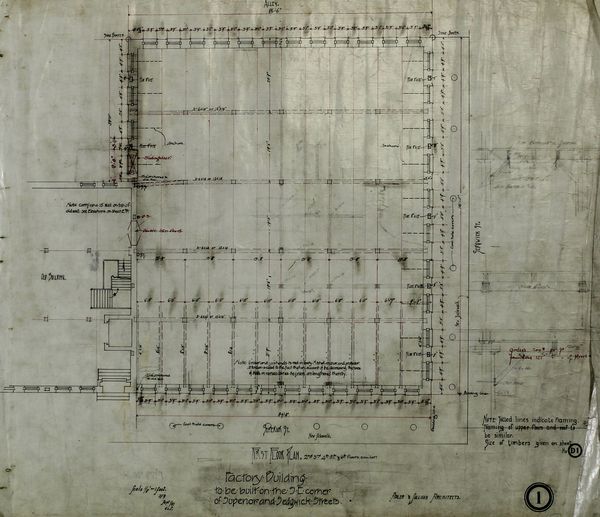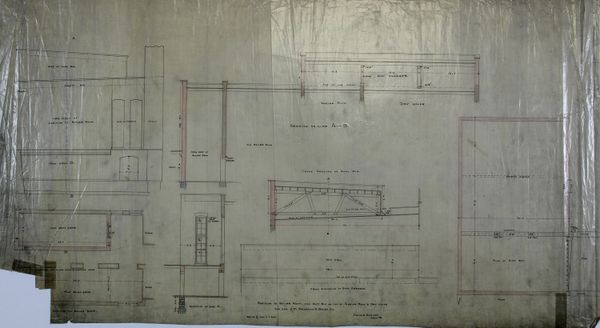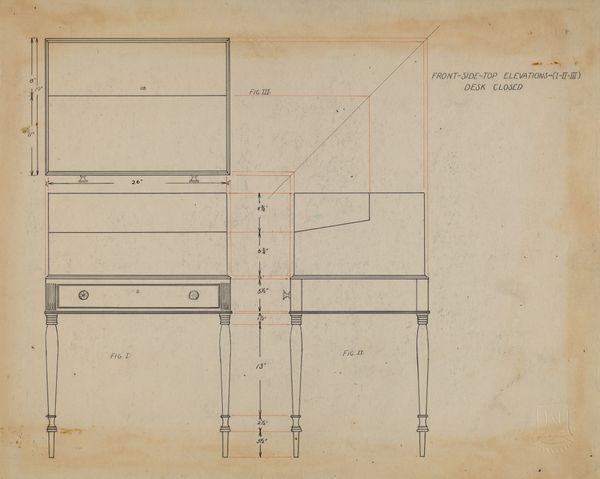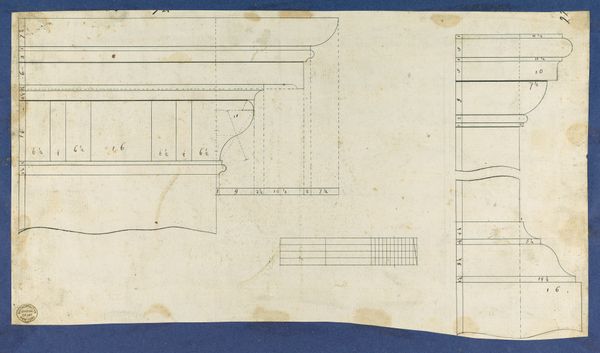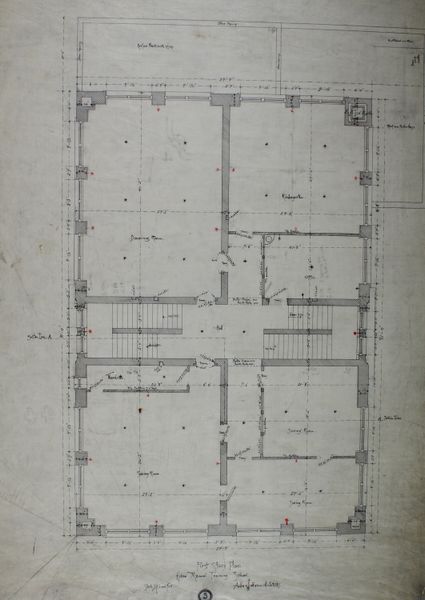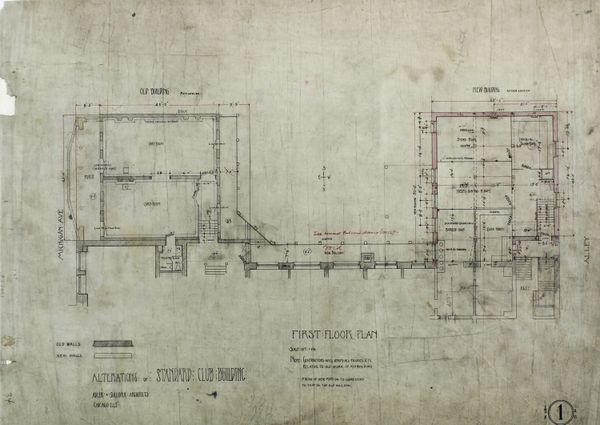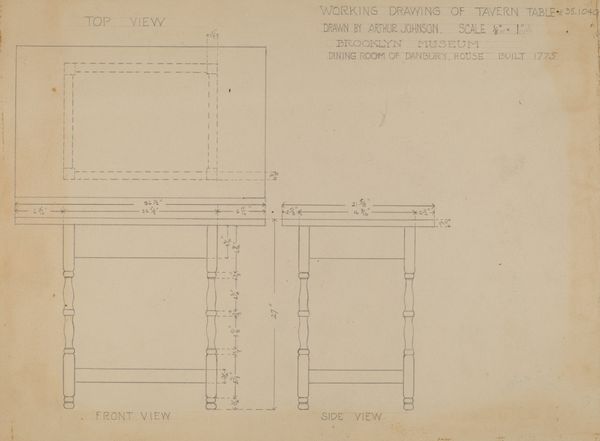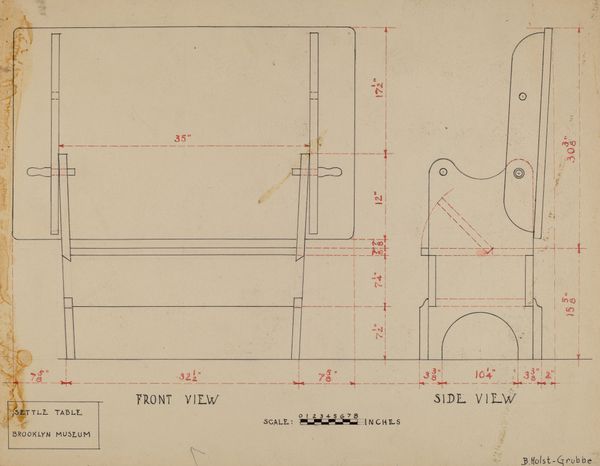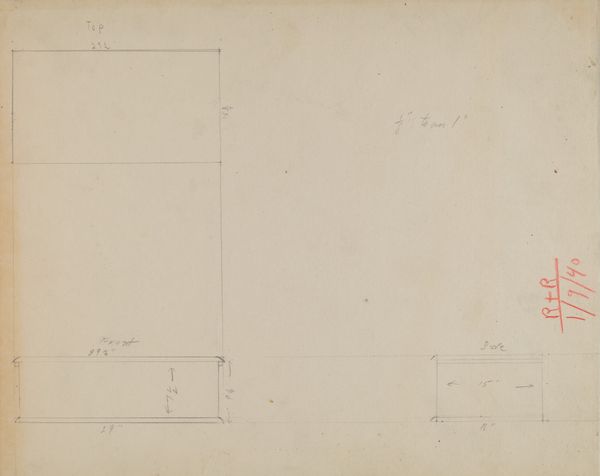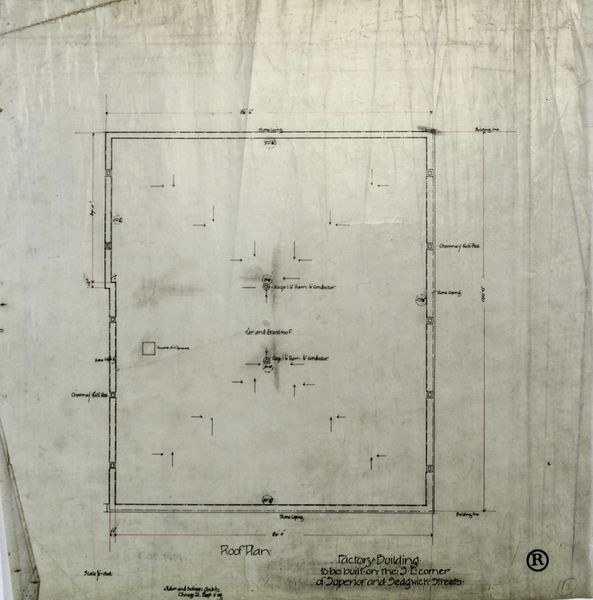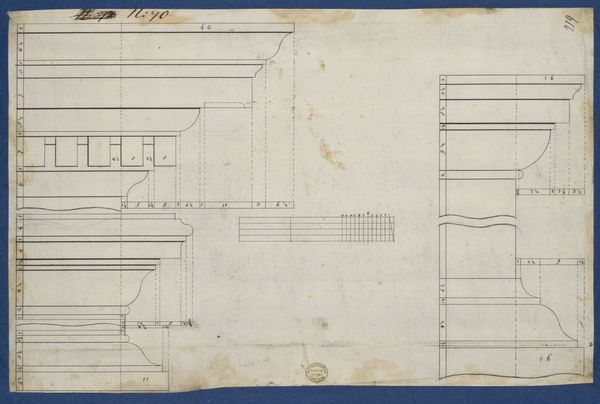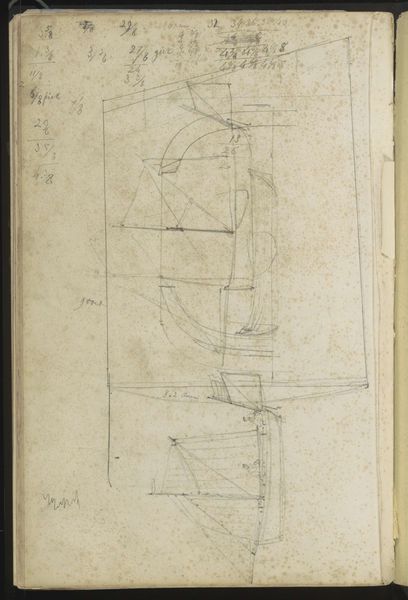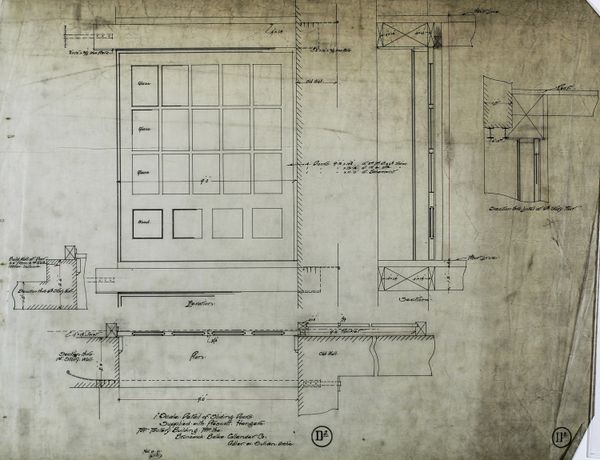
Brunswick Balke Collender Company Factory Building, Chicago, Illinois, Stone Specifications Possibly 1891 - 1989
0:00
0:00
drawing, paper, ink, graphite, architecture
#
drawing
#
paper
#
ink
#
geometric
#
united-states
#
line
#
graphite
#
architecture
Dimensions: 46 × 63 cm (18 1/8 × 24 13/16 in.)
Copyright: Public Domain
Curator: Here we have "Brunswick Balke Collender Company Factory Building, Chicago, Illinois, Stone Specifications," attributed to Adler & Sullivan, Architects, likely created sometime between 1891 and 1898. It's a drawing in ink and graphite on paper. Editor: The meticulous lines create an unexpectedly delicate feel for what must have been quite an imposing industrial building. Curator: Indeed. These architectural drawings were not merely blueprints; they dictated the labor and materials involved in construction. Note how each stone is meticulously accounted for in its dimensions and placement. The sheer volume of precise work required speaks to the level of craft involved, especially considering the era’s technological limitations. Editor: And in that specificity, we can extrapolate a sense of the socio-economic landscape of Chicago at the time. Brunswick Balke Collender, manufacturers of billiard tables and other wood products, signifies the burgeoning leisure industry fueled by industrial prosperity. Their factory’s location, construction, and even its stone specifications reflect the economic and material flows through Chicago and beyond. Curator: Exactly! And, by paying such close attention to the stone itself—the rubbing, the finishing—the drawing almost elevates building materials to subjects of art themselves. We aren’t just looking at the architectural plan, we see considerations of extraction, refining, shaping, all requiring immense coordinated work and transport. Editor: That focus really highlights the role of these architectural drawings as mediators between capital, labor, and the built environment. It’s almost an unintentional monument to a particular moment of Chicago’s history. It reminds us of the structures that shaped labor relations, market competition and leisure time for its citizens. Curator: Yes, it prompts reflection on architectural innovation alongside a consideration of materiality itself. It brings new dimensions to how we define the boundaries between "art," and "utility." Editor: For me, I can look at this as not just lines on paper but consider their real world implications on human effort and experience, of shaping materials, space and, eventually, lives.
Comments
No comments
Be the first to comment and join the conversation on the ultimate creative platform.
